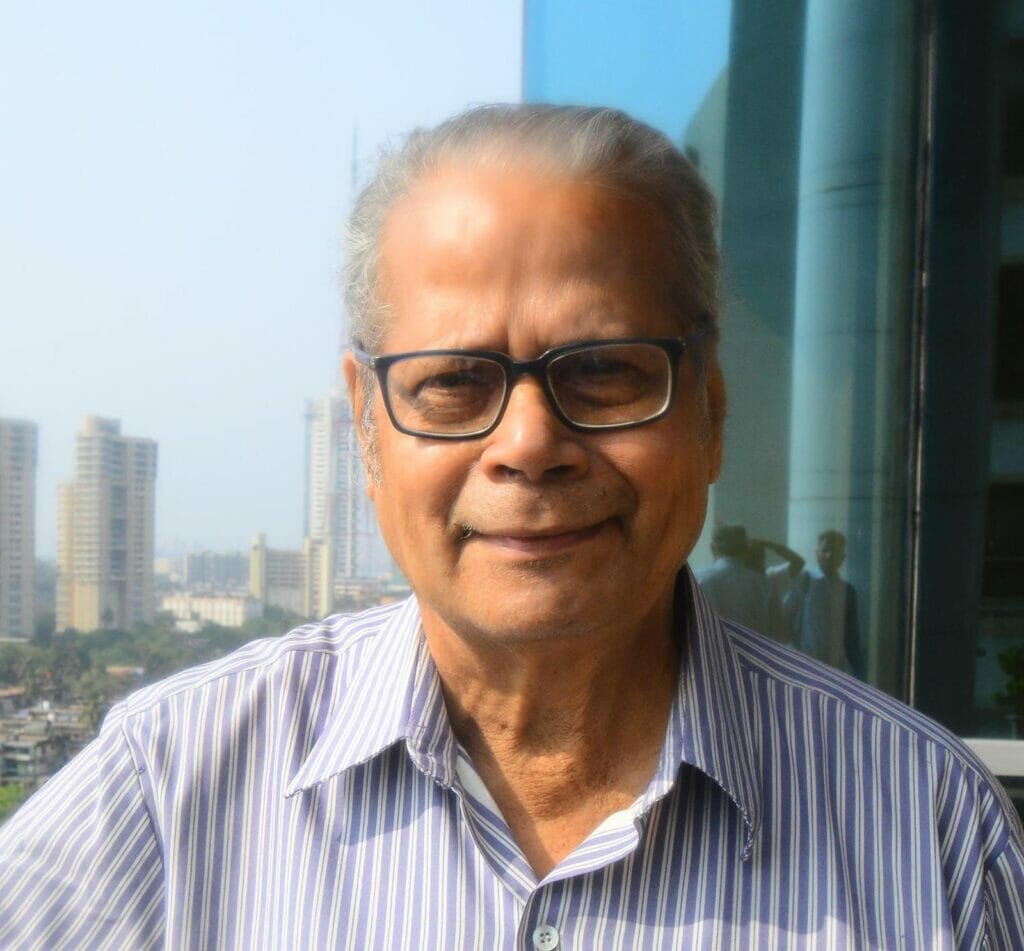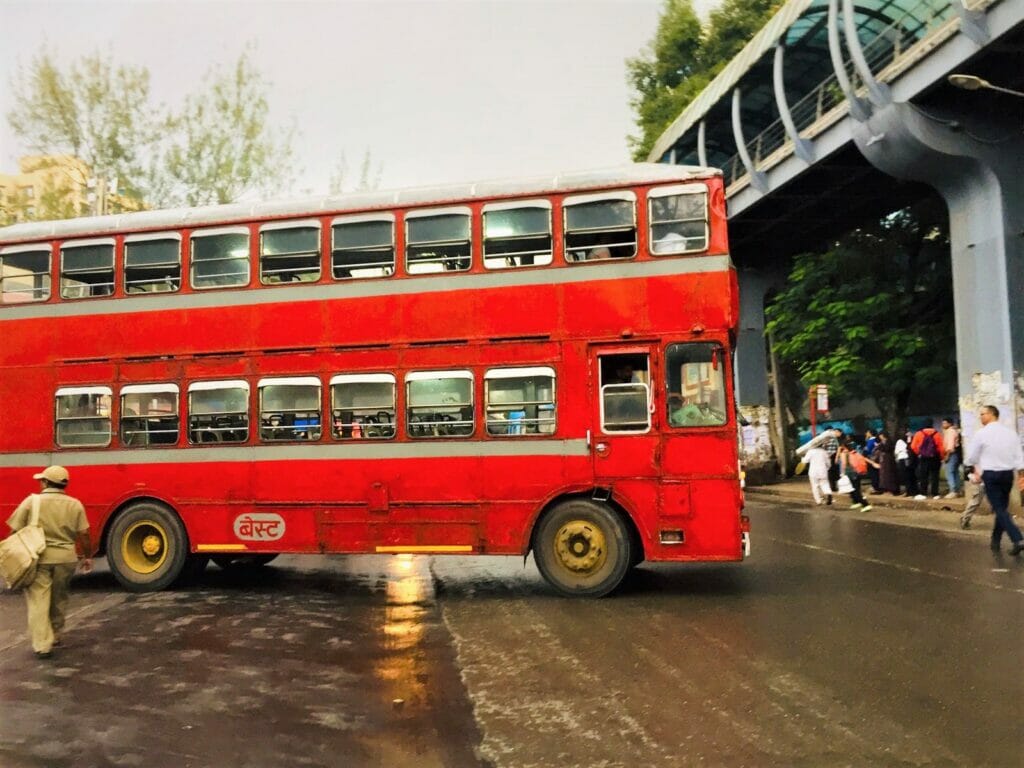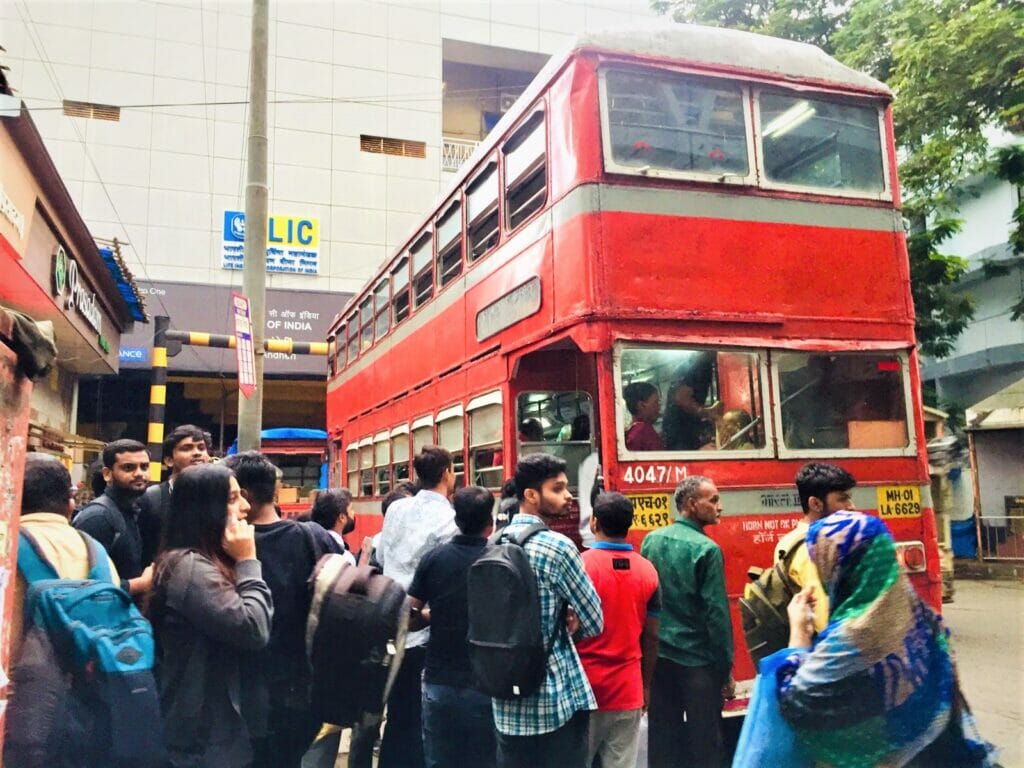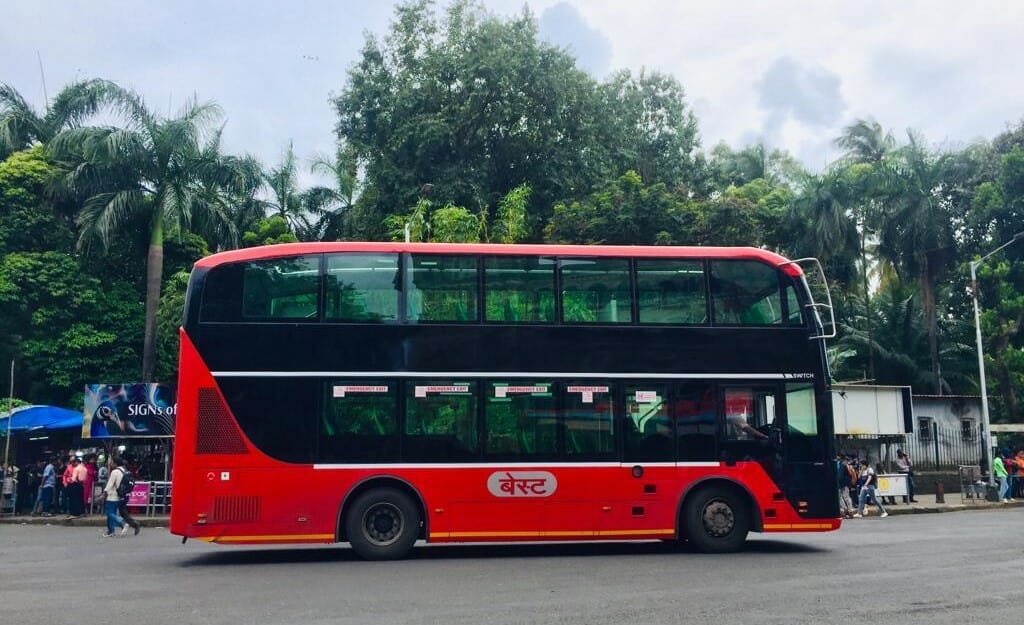Mumbai’s beloved red double decker buses, steeped in memories cherished by millions over the decades, made their last journey on the streets of Mumbai on September 15.
The Brihanmumbai Electricity Supply and Transport (BEST) authorities announced that these vehicles, reaching the end of their 15-year operational lifespan, will go off the roads completely. These buses have been replaced by electric AC double decker buses and a few are already operational.
On late Thursday evening, a day before the last ride of the double-decker bus, the BEST officials also announced that the AC electric double decker fleet will be taken to a staggering 900 buses in the coming months.
However, scores of commuters say that these new arrivals lack the nostalgic charm and they would miss the good old double decker with open windows.
Over the past few weeks, commuter groups and bus enthusiasts have appealed to BEST to preserve at least two of these iconic buses in a transport museum. They have also reached out to the Maharashtra Chief Minister, the Tourism Minister, and the BEST administration.
The gradual phase-out of double-decker buses began several years ago, and now, on September 15, we witness the departure of the final bus on route number 415 in Andheri.
Citizen Matters spoke with veteran journalist and author Vidyadhar Date, a keen observer of the city and a dedicated activist for efficient public transport. Vidyadhar is author of the book “Traffic in the Era of Climate Change: Walking, Cycling, Public Transport, Need Priority” and also the convener of Amchi Mumbai Amchi BEST.

What is the historical significance of the double decker bus?
The iconic double-decker bus holds a special place in Mumbai’s history. These classic buses, once a common sight on the city’s roads, have a rich legacy. Many Mumbai residents cherish memories of riding on these buses. What truly made the double-decker experience unique was the fresh air and panoramic view it offered from the top deck. These buses plied from south Mumbai to the suburbs, serving countless passengers for decades. Bus number 123, which travelled along the picturesque Marine Drive, is particularly famous. These buses have even graced the silver screen in numerous Bollywood songs and movies, including those featuring Amol Palekar and Amitabh Bachchan.
How should this historical legacy be preserved?
In London, the red double-decker bus is a source of pride, and even the mayor himself celebrates it by riding it and uploading pictures. But in contrast to such cities, Mumbai’s double-decker buses have faded into oblivion. Rather than treating them as mere pieces of iron and steel, the government should recognise their cultural significance. Preserving one or two of these iconic buses in a transport museum would help people remember and appreciate their historical value.

Read more : Inaccessible public transport: Difficult and expensive travel for differently-abled
How do you view the current state of public transport in Mumbai?
The public transport that we have right now is mainly colonial heritage. The current government needs to step up and give better services to the people. The government has spent several thousand crores of rupees on the metro, which is not used by many people. It may pick up years later but till then the growing population of the city is stuck in tremendous traffic daily. These funds could have been allocated to enhance and modernise our bus services, as well as to create more road space for these buses. The idea of the metro was to reduce road traffic but it is not serving that purpose. At present, the western express highway experiences daily traffic jams. You cannot go on increasing the number of cars and expect a solution to traffic.
What is the importance of buses in particular in a city like Mumbai? What can we learn from other cities?
Buses play a pivotal role in Mumbai’s urban transportation network due to their flexibility in route options. Unlike the metro system, which often requires commuters to change lines at different stations, buses offer direct connectivity even from places like Borivali to Belapur. Increasing the number of buses in the city is not only cost-effective, but also crucial for providing accessible transportation to a vast population. It’s important that buses receive adequate funding and attention among other public transportation.
London sets a prime example with its extensive bus fleet, even though its metro system has been in operation for over a century. Unlike India, where buses often take a back seat to other modes of transport, London treats bus services with equal importance, recognising their role in the daily lives of its citizens.

What should be the government’s focus regarding public transport?
We should start working from the top. It is crucial for IAS officers and bureaucrats to develop a profound understanding of public transportation within the context of each city’s unique needs. Moreover, the adoption of the worst models from the West should stop. Instead, decision-makers should have a meticulous study of each city, and craft customised and efficient plans for the city. This approach can pave the way for a more sustainable and effective public transportation system that aligns seamlessly with the city’s growth and evolving needs.

What can Mumbaikars do to get better public transport?
Public transport plays a major role in environmental protection. The use of public transport leads to fewer pollution-generating private vehicles on the road. We, motorists, should become mindful of the pollution emitted by our vehicles, every single day. Much like a smoker, who becomes aware of the consequences of their actions when lighting up in public spaces, we too must develop a heightened consciousness regarding the emissions from our vehicles. Recognising the inconvenience and health hazards these emissions pose to ourselves and those around us is the first step towards transformation.
It’s time for a change, and that change begins with each one of us. The citizens must start opting for public transportation to support this cause, while the government should take responsibility for the efficient delivery of these basic facilities to the people.
Citizens can reach out to the commuter advocacy group “Aamchi Mumbai Aamchi BEST” through the following channels:
- Facebook: https://www.facebook.com/savebest.savemumbai/
- Website: https://amchibest.wordpress.com/
- X(Twitter): https://twitter.com/aamchibest?lang=en